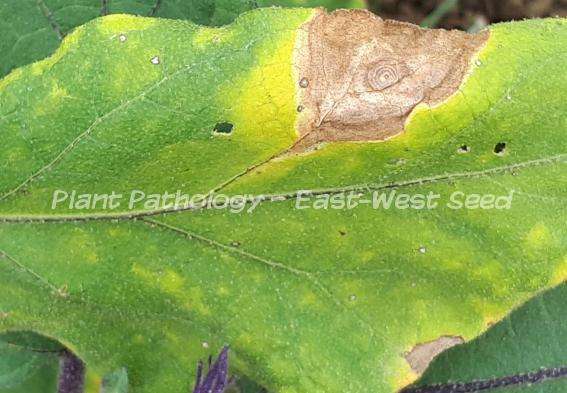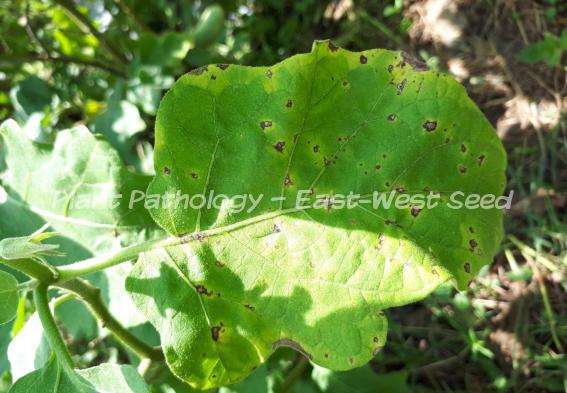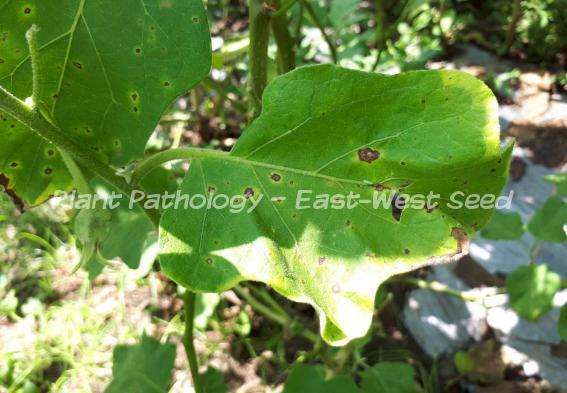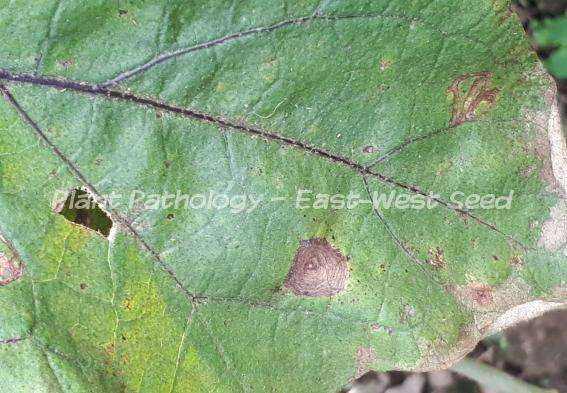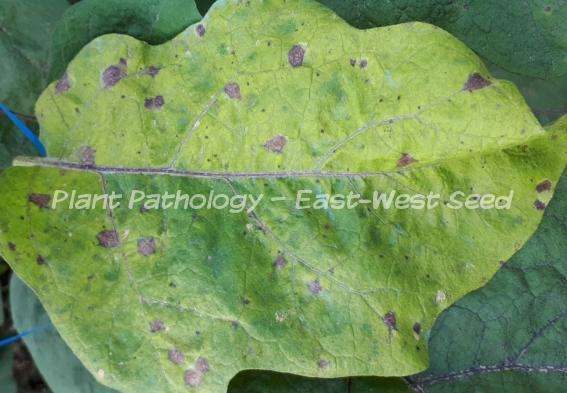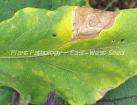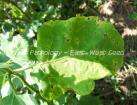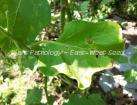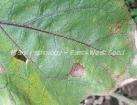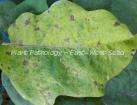Causal Agent:
Fungi (Corynespora cassiicola)
| Characteristic Symptoms: | |
 |
Initial symptoms appear as small, necrotic lesions with light brown center and dark brown marginal rings that develop into large spots with characteristic target-shaped rings. |
 |
Several spots can be observed on the leaf surface under favorable conditions leading to blighting of the leaves. |
| Conditions for Disease Development: | |
 |
The disease is favored by moderate temperatures (20-28°C) and extended periods of leaf wetness (16h or more). |
 |
The fungus infects many crops including pepper, cucumber, papaya, ornamentals and weeds. |
 |
The fungus can colonize weeds or other crops and remains viable for up to two years. |
 |
The disease is spread by air-borne conidia/spores. |
 |
Rain splashes or windblown soil particles create wounds for spores to enter. |
| Control and Management: | |
 |
Use disease-free seedlings. |
 |
Proper plant spacing can help reduce extended periods of leaf wetness. |
 |
Maintain good field sanitation (e.g. remove and burn heavily affected leaves; remove weeds). |
 |
Preventive application of chlorothalonil and mancozeb. |
To view other diseases, click here.
Need more help? Ask the Doctor.



